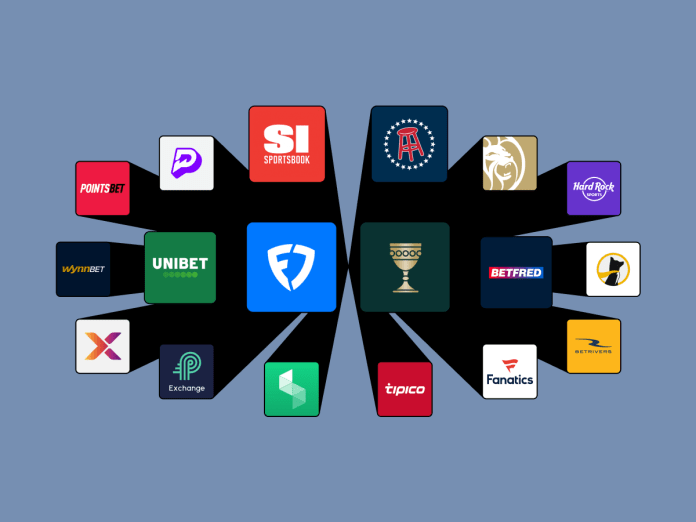
In the competitive world of sports betting, the difference between long-term profitability and gradual bankroll erosion often comes down to one critical factor: consistently finding the best odds for your wagers. While casual bettors might stick with a single sportsbook for convenience, serious players understand that line shopping—comparing odds across multiple bookmakers—is essential for maximizing value and securing a sustainable edge. This comprehensive guide explores the strategies and tools that professional bettors use to identify the best odds in an increasingly complex betting landscape.
Understanding the Importance of Line Shopping
The mathematics behind line shopping is compelling. Even small differences in odds can dramatically impact your long-term profit potential. Consider this simple example: if you place 1,000 bets over a year with a 53% win rate (a strong performance by professional standards), the difference between average odds of -110 versus -105 equates to approximately 2.4% of your total wagered amount. On a $100,000 betting volume, that’s $2,400 in additional profit—simply from finding slightly better odds.
Professional bettor Steve Fezzik explains: “Many recreational bettors don’t realize that successful sports betting isn’t about winning every bet—it’s about getting the best of the number consistently. I’d rather have a 50% winning percentage at -105 than a 52% winning percentage at -110. The math simply works better.”
This principle becomes even more significant when applied to moneyline, futures, and prop bets, where the variation between sportsbooks can be substantially larger than in point spread markets.
The Price Differential Phenomenon
Odds discrepancies between sportsbooks exist for several reasons:
- Different risk management philosophies among bookmaking operations
- Varying customer bases that create imbalanced betting action
- Regional biases that affect how books set and adjust lines
- Timing differences in how quickly books respond to new information
- Promotional strategies that intentionally offer enhanced odds in specific markets
These factors create a constantly shifting landscape of opportunity for bettors willing to compare options across multiple platforms. While the mainstream U.S. sportsbooks (DraftKings, FanDuel, BetMGM, etc.) often have similar lines, significant variations still emerge—particularly in less popular markets and sports.
Essential Tools for Effective Line Shopping
Modern technology has dramatically simplified the process of comparing odds across sportsbooks. Several categories of tools have become indispensable for serious bettors:
1. Odds Comparison Platforms
Dedicated odds comparison sites and apps aggregate lines from dozens of bookmakers in real-time, allowing bettors to quickly identify the best available price for any market. These platforms typically offer customizable views, sorting options, and even alerting capabilities for significant line movements.
Services like Betzoid have elevated this concept further by integrating advanced analytics with comprehensive odds comparison. Their platform not only shows current odds across major sportsbooks but also provides historical odds data, line movement tracking, and algorithmic evaluations of where betting value exists. This combination of odds comparison and analytical insight creates a powerful tool for identifying the most advantageous betting opportunities.
2. Line Movement Trackers
Understanding how odds evolve over time can provide valuable insights into market sentiment and potential value. Line movement trackers record changes in odds and spreads, allowing bettors to:
- Identify which sportsbooks are leading or lagging in adjustments
- Spot instances where sharp money is influencing the market
- Understand the historical volatility of specific markets
- Project potential future movements based on established patterns
These insights help bettors determine not just where to place bets, but when to place them for maximum value.
3. Arbitrage Finders
For those with access to multiple sportsbooks, arbitrage opportunities—situations where the odds discrepancies are so significant that a profit can be guaranteed by betting all possible outcomes—occasionally emerge. Specialized arbitrage software continuously scans thousands of markets to identify these situations and calculate optimal bet allocations.
While true arbitrage opportunities have become rarer as the betting market has matured, related concepts like “value arbitrage” (betting only the side with positive expected value) remain viable strategies for sophisticated bettors.
4. Odds Calculator Utilities
Converting between different odds formats (American, decimal, fractional), calculating implied probabilities, and determining optimal bet sizes can be complex when done manually. Specialized calculator utilities streamline these processes, allowing bettors to quickly evaluate the true value proposition of different odds offerings.
Building Your Sportsbook Portfolio
Effective line shopping requires access to multiple sportsbooks, but the strategic curation of your bookmaker portfolio involves more than simply opening as many accounts as possible. Consider these factors when selecting which sportsbooks to include in your rotation:
Complementary Pricing Tendencies
Different sportsbooks often exhibit consistent pricing tendencies in specific markets. For example, one book might routinely offer better odds on home favorites in the NBA, while another might provide superior value on MLB underdogs. By tracking these patterns, you can build a portfolio of sportsbooks with complementary strengths that collectively maximize your odds of finding value regardless of what you’re betting.
Market Depth and Diversity
Some sportsbooks excel in major markets but offer limited options for niche sports or prop bets. Others might provide extensive proposition offerings but have less competitive odds on standard markets. A well-balanced portfolio includes both mainstream operators and specialty books that cater to particular interests or betting styles.
Geographical Availability
Licensing restrictions mean that sportsbook availability varies by location. Bettors in states with multiple legal options should prioritize operators with physical presence in their jurisdiction, while those with access to international markets might include select offshore options in their portfolio (while remaining cognizant of relevant legal considerations).
Promotional Value
Beyond the base odds, sportsbooks offer various promotions that can significantly enhance value: odds boosts, parlay insurance, free bets, and reduced juice specials. These promotional offerings should factor into your overall line shopping strategy, particularly for recreational bettors with moderate bankrolls.
Practical Strategies for Effective Line Shopping
With the right tools and sportsbook portfolio in place, implementing an effective line shopping strategy comes down to systematic execution. Consider these practical approaches:
The Preparation Phase
Serious bettors conduct their primary handicapping without looking at existing market odds to avoid anchoring bias. Only after developing your own projections should you then compare available odds to identify value. This sequencing ensures that your perception of fair odds isn’t unconsciously influenced by the existing market.
Tiered Line Shopping
Not all bets warrant the same level of line shopping effort. Professional bettors often employ a tiered approach:
- Tier 1 (High-Volume Markets): Comprehensive comparison across all available books
- Tier 2 (Medium-Volume Markets): Check 3-5 books known for competitive odds in the relevant category
- Tier 3 (Low-Volume/Recreational Bets): Quick check of 2-3 primary books
This approach ensures that you invest the most time in markets where the potential return on that time investment is highest.
Timing Considerations
Different betting markets have distinct optimal timing windows for finding the best odds:
- NFL spreads: Often best on Wednesdays or early Thursdays, before weekend public money flows in
- MLB moneylines: Frequently offer value immediately when opening, before sharp adjustments
- NBA totals: Can show significant pre-game movement based on late injury news
- UFC/Boxing props: Often most favorable early in the week before recreational bettors engage
Understanding these timing patterns for your preferred betting markets can substantially increase your success rate in finding advantageous odds.
Line Freezing Techniques
When you identify favorable odds that might soon change, various “line freezing” techniques can help secure those odds even if you’re not immediately ready to place the bet:
- Placing a smaller “placeholder” bet that can be supplemented later
- Using “buy time” features that some sportsbooks offer
- Adding the selection to a parlay that can be modified before submission
These approaches can provide valuable extra time for additional research or for checking other books while maintaining access to the currently favorable odds.
Overcoming Common Line Shopping Challenges
Even with the right tools and strategies, effective line shopping presents several challenges that must be navigated:
Account Limitation Management
Sportsbooks sometimes limit or restrict accounts that consistently find and exploit the best odds. To maintain long-term access to multiple books, consider these practices:
- Occasionally accepting slightly sub-optimal odds to maintain a balanced betting profile
- Including some recreational bets (parlays, props) alongside your primary wagers
- Staggering bet timing rather than always betting immediately after line movements
- Keeping bet sizes proportional to the typical volume for that market at each book
These approaches help you maintain the appearance of a recreational bettor while still capitalizing on the majority of advantageous opportunities.
Bankroll Distribution
Effective line shopping requires maintaining adequate funds across multiple sportsbooks, which creates bankroll management challenges. Professional bettors typically employ one of two approaches:
- The Hub and Spoke Model: Maintaining a central bankroll with regular distributions to individual sportsbooks
- The Proportional Funding Model: Allocating bankroll percentages to different books based on expected betting volume
Either approach requires careful tracking and regular rebalancing to ensure funds are available where opportunities emerge.
Time Management
Comprehensive line shopping across dozens of potential options can become extremely time-consuming. Effective time management strategies include:
- Using automated odds alerting for your highest-priority markets
- Establishing a regular schedule for odds checking rather than constant monitoring
- Focusing primarily on sportsbooks where you’ve historically found the best values
- Delegating or automating certain aspects of the process where possible
These approaches help maintain the benefits of line shopping without allowing it to consume disproportionate amounts of time.
The Future of Line Shopping: Emerging Technologies
The tools and techniques for finding the best odds continue to evolve rapidly. Several emerging technologies promise to make line shopping even more efficient in the coming years:
- API-driven automation that can place bets programmatically when optimal conditions are detected
- Machine learning algorithms that predict line movements based on historical patterns
- Blockchain-based betting exchanges that may offer peer-to-peer markets with reduced margins
- Community-sourced odds intelligence platforms that aggregate insights from thousands of bettors
As these technologies mature, the advantage will increasingly shift toward bettors who can effectively integrate them into their line shopping strategy.
Conclusion: The Cumulative Advantage
Finding the best odds is rarely a dramatic, bankroll-doubling revelation. Instead, it’s a series of small advantages—a slightly better price here, a half-point extra there—that compound over hundreds or thousands of bets to create a significant edge. This cumulative advantage often represents the critical difference between winning and losing sports bettors in the long run.
While casual bettors might view line shopping as an unnecessary complication, those serious about long-term profitability recognize it as perhaps the single most accessible edge available in today’s betting marketplace. Unlike developing sophisticated statistical models or acquiring insider information, comparing odds across different sportsbooks is a straightforward strategy available to anyone willing to invest the time and effort.
By implementing the tools and approaches outlined in this guide, you can ensure that every bet you place offers the maximum possible value—and in the mathematically precise world of sports betting, that consistent value maximization is the surest path to sustainable success.




